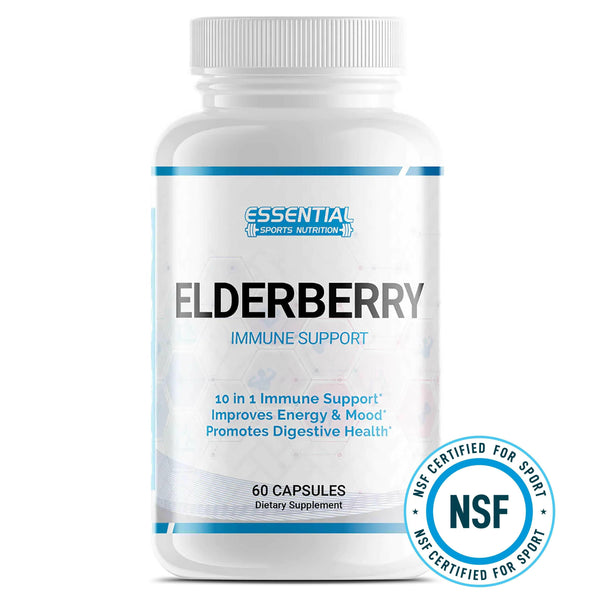Growth Hormone Deficiency: Symptoms, Causes, and Solutions
If you or someone you love has been grappling with growth hormone deficiency, navigating the sea of information can be overwhelming. At its core, this condition arises when your pituitary gland doesn't produce enough growth hormone, an essential player in normal development and health. Growth hormone deficiency affects not just children but can extend into adult life, manifesting differently across ages. This hormone is pivotal for both growth and metabolic regulation, and its insufficiency can lead to a range of health issues.
In the context of children, impaired growth is the most visible sign; they may not grow tall enough to match their age peers. But what's behind this hormone deficiency? It could be linked to genetic factors impacting the pituitary gland or acquired from brain injuries or other conditions. Understanding the causes of growth hormone deficiency is crucial because early detection can enormously influence treatment success and quality of life.

Key Takeaways
-
Growth hormone deficiency in children and adult growth hormone deficiency are conditions where the body doesn't make enough growth hormone.
-
The condition can derive from issues related to the pituitary gland, which is responsible for hormone production.
-
Genetic factors, brain injuries, and other health complications can lead to hormone deficiencies.
-
Early intervention can play a significant role in managing the condition and enhancing growth potential in children.
-
Recognizing the signs and causes of growth hormone deficiency is essential for timely treatment and optimizing health outcomes.
Exploring the Role of the Pituitary Gland in Growth Hormone Production

At the center of our body's growth and development lies the pituitary gland, a small yet critical component that resides at the brain's base. This gland's chief function is the secretion of growth hormone (GH), which is essential for muscular and skeletal growth. An understanding of the pituitary gland's role offers insight into why maintaining healthy levels of growth hormone is significant for overall development.
The creation and release of GH can be hindered by numerous factors, leading to what we refer to as hormone deficiencies. When these deficiencies occur during pivotal developmental years, conditions such as pituitary dwarfism may ensue, which is characterized by below-average growth and stature due to inadequate GH levels. In some cases, when no apparent reason for GH deficiencies is found, the condition is labeled as idiopathic, making the diagnosis and treatment a challenging endeavor.
Both congenital and acquired reasons can contribute to the disruption of the normal secretion of GH. Situations such as genetic disorders, structural brain anomalies, or even damage caused by accidents can contribute to the delicate balance of the pituitary gland being disturbed. To understand the expansive effects of growth hormone on growth, it is important to delve into how GH works in close tandem with other bodily functions, promoting cell reproduction and regeneration, crucial for growth and repair.
In some instances, medical treatments can tap into recombinant technology to provide human growth hormone (HGH) as a therapy for those deficient, closely mimicking the natural hormone's effects on growth. Close monitoring by healthcare professionals ensures that levels of growth hormone are maintained within a normal range, alleviating the impact of hormone deficiencies and supporting the return to usual growth patterns.
-
Congenital GH Deficiency: Often stemming from genetic issues affecting the pituitary.
-
Acquired GH Deficiency: Can result from injury or illness affecting brain function.
-
The Implications of HGH Therapy: Mimics natural GH to stimulate growth in deficient individuals.
Ultimately, your body's growth and development are complex processes governed by hormones, and the pituitary gland plays a starring role in orchestrating these events. Whether it’s warding off hormone deficiencies or understanding the therapeutic approaches to GH deficiencies, the exploration of this fascinating gland is key to appreciating our body's intrinsic growth mechanisms.
Recognizing the Signs of Growth Hormone Deficiency in Children

As you navigate the concerns surrounding your child's growth, it's imperative to recognize the symptoms of growth hormone deficiency (GHD) that may differentiate this condition from typical development. Pediatric endocrinology offers insight into the signs that could signal a need for medical evaluation. Spotting these early can lead to timely intervention and better outcomes for children with GHD.
Comparing Growth Milestones with Peers
One of the most evident signs of GHD in children is a noticeably slow growth rate. This often results in short stature when placed side by side with their peers. If your child lags significantly in height or appears to have a growth delay, it may be a cue that their growth hormone levels need assessment by a healthcare professional.
Assessing Physical Symptoms of GHD
Physical manifestations, aside from stature, are also telling indicators. The following table highlights some key symptoms and compares them to normal growth patterns. If you observe several of these delayed growth signs, consulting with a specialist in pediatric endocrinology could be crucial for your child's health.
| Symptom | Children with Normal Growth | Children with Growth Hormone Deficiency |
|---|---|---|
| Bone Age | Typically corresponds with chronological age | Often delayed relative to chronological age |
| Dental Development | Dental milestones reached as expected | Delayed tooth eruption |
| Hair and Nail Growth | Consistent and age-appropriate | Fine hair and poor nail growth |
| Height Velocity | Steady and within average ranges for age and gender | Decreased growth rate over 6 to 12 months |
Monitoring your child's growth and development is essential. Be attentive to growth velocity, as reflected on a growth chart, and physical signs that could suggest a disruption in growth hormone production. Children with GHD can achieve significantly improved health outcomes with early diagnosis and the appropriate treatment plan.
What Determines a 'Normal' Growth Rate in Pediatric Development?

As you navigate the milestones of your child's growth, you may wonder what constitutes normal growth and how it's measured. Understandably, normal growth can vary greatly from one child to another. However, established growth patterns serve as a useful guide for pediatric development. A growth chart is an essential tool that tracks levels of growth, comparing benchmarks with other children of the same age to monitor your child's growth potential.
During the first two years of life, a child's growth is more rapid, and it's critical to observe these changes closely. To give you a clearer picture, let's examine the average growth rate during these pivotal years:
| Age | Average Growth (inches per year) | Percentile Threshold for Concern |
|---|---|---|
| 0 - 1 year | 10 | Below 3rd percentile |
| 1 - 2 years | 5 | |
| 2 years to Puberty | Decreases gradually |
This table is a streamlined reference to evaluate whether your child is following a normal growth trend. Falling significantly below the third percentile is a signal to consult a health professional. It might indicate that your child isn't reaching their full growth potential, and further evaluation could be necessary to rule out any underlying health concerns, such as growth hormone deficiencies.
Growth Hormone Deficiency: Congenital Versus Acquired Causes
When diving into the intricate world of growth hormone deficiency, it's essential to understand the different origins of the condition. Broadly categorized into congenital and acquired causes, each type springs from distinct sources that could affect the growth and development of individuals right from childhood.
Genetic and Developmental Factors in Congenital GHD
Congenital growth hormone deficiency surfaces from a complex interplay of genetic and developmental factors. It often traces back to genetic mutations that directly influence the development of the pituitary gland or disrupt the critical hormone pathway essential for normal growth. A majority of such cases, often referred to as idiopathic, elude precise genetic explanation, underscoring the necessity for continued research into the mechanisms of congenital GHD.
External Triggers Leading to Acquired GHD
In contrast, acquired growth hormone deficiency typically emerges from external influences. These could range from brain tumors and cranial injuries to the side effects of radiation therapy. Conditions impacting the hypothalamus or diseases leading to its disrupted connection with the pituitary gland, like histiocytosis, are also known culprits. Moreover, an auto-immune condition such as lymphocytic hypophysitis could impede the hormone secretion process, further complicating the growth horizon for an individual.
| Congenital GHD | Acquired GHD |
|---|---|
| Genetic mutations | Brain tumors or injuries |
| Idiopathic origins | Radiation therapy side effects |
| Disrupted hormone pathway | Diseases affecting hypothalamus-pituitary axis |
| Pituitary gland developmental defects | Auto-immune conditions like lymphocytic hypophysitis |
Whether you're dealing with congenital growth hormone deficiency stemming from genetic mutations or an acquired variant due to a cranial injury or an auto-immune condition, understanding the root cause is key to tailoring effective treatment plans. It’s critical to note that the pituitary gland development and the maintainance of an unimpeded hormone pathway are vital for normal growth, making early diagnosis and intervention imperative.
Children's Hormone Specialists: Advocates for Early Diagnosis and Advocacy

When it comes to identifying and managing growth failure, the role of a pediatric endocrinologist cannot be overstated. These dedicated children’s hormone specialists are at the forefront of the battle against growth hormone deficiency (GHD), ensuring that each child has the opportunity for healthy development through early diagnosis and efficient growth hormone therapy. Understanding the nuances of such an intricate condition requires a partnership between caregivers and medical professionals, with the common goal of providing the best possible treatment for growth hormone deficiency.
With advancements in medical technology, synthetic growth hormone has become a game-changer, offering a beacon of hope for many children afflicted with GHD. However, diagnosis and prescription of such treatments fall under the careful expertise of a pediatric endocrinologist, whose comprehensive approach can mean the difference between lifelong complications and a path to normalcy.
-
It's essential to recognize children's growth patterns and consult a specialist if any irregularities appear.
-
Early intervention allows for a timely start of synthetic growth hormone therapy, preventing long delays in growth development.
In a world where each child's health journey is unique, the wisdom and empathy of a pediatric endocrinologist are invaluable. Your child's best advocate may come in the form of these hormone guardians who fight diligently to ensure that every child reaches their full potential.
| Concern | Role of Pediatric Endocrinologist | Benefits of Early Intervention |
|---|---|---|
| Diagnosis of Growth Hormone Deficiency | Conduct thorough evaluations to diagnose GHD accurately. | Reduced risk of associated health conditions. |
| Prescription of Growth Hormone Therapy | Develop tailored treatment plans including synthetic growth hormone. | Enhanced growth and development potential. |
| Monitoring Treatment Progress | Regular assessments to track growth and adjust treatment as needed. | Optimizations that ensure the maximum effectiveness of therapy. |
| Family and Child Support | Provide education and resources for understanding and managing GHD. | Empowered caregivers and improved quality of life for the child. |
Remember, you're not alone in this journey. There's a network of support, woven through the expertise of children’s hormone specialists, to help your child thrive. Take the first step towards understanding GHD by speaking with a trusted pediatric endocrinologist, the shepherd towards a healthier path for your child's growth and hormonal well-being.
Pediatric Endocrinology: Diagnosing Growth Hormone Deficiency through Tests
When it comes to determining whether a child may have growth hormone deficiency (GHD), a pediatric endocrinologist will initiate several key diagnostic tests. Each test is designed to unravel the intricate problems associated with hormone production and bone development. If you suspect your child may be facing GHD, here's what you can expect during the diagnostic process.
Understanding Blood Tests and Hormone Levels
Blood tests are the cornerstone of diagnosing GHD. They measure levels of key biomarkers, including human growth hormone and insulin-like growth factor binding proteins, which are essential indicators of how well the body's growth functions are performing. Sometimes, children can undergo a stimulation test, which challenges the pituitary gland to release growth hormone, thereby testing its capacity and health.
The Relevance of Bone Age and X-ray Analysis
Bone age assessment is a diagnostic tool used by pediatric endocrinologists to aid in the diagnosis of GHD. This involves a simple yet telling X-ray of the hand and wrist. It's a non-invasive procedure that contrasts a child's skeletal maturity with their chronological age, which can pinpoint growth delays, a telltale sign of GHD.
| Diagnostic Test | What It Measures | Relevance to GHD |
|---|---|---|
| Blood Test for IGF-1 Levels | Insulin-like growth factor 1 | Indicative of HGH activity in the body |
| Stimulation Test | Growth hormone secretion response | Assesses pituitary gland function and deficiency |
| Bone Age X-ray | Skeletal development | Helps assess growth delays against chronological age |
Understanding these tests and what the results mean for growth hormone treatment is crucial for any parent navigating the complexities of GHD. It's the expertise and guidance of a knowledgeable pediatric endocrinologist that ensure proper diagnosis and effective treatment plans that cater to the individual needs of each child.
Comprehensive Treatment Approaches: From Human Growth Hormone to Holistic Care

The journey to address growth hormone deficiency is not one-dimensional. Embracing a holistic approach to treatment ensures the best chances for improvement and involves more than just the administration of human growth hormone. While the inclusion of synthetic growth hormone is central to the therapeutic regimen, it must be part of a broader, personalized endocrine health strategy.
Effective growth hormone therapy entails diligent monitoring by specialists in the field of endocrinology, ensuring that each phase of treatment is adapted to the individual needs of the patient. It's not solely about what is being treated but how the care is rendered that can significantly change a child's course of development.
Integrating a holistic care philosophy means that while growth hormone therapy works on a physiological level, supportive care will address the psychological, social, and lifestyle aspects that are enmeshed with this condition. This comprehensive care approach can look something like this:
-
Nutrition and Diet Management - Essential for overall health and can optimize the effects of growth hormone therapy.
-
Physical Activity - Encouraged to promote better health outcomes and is tailored to the child's capabilities and interests.
-
Emotional Support - Therapy and counseling services to manage the potential psychosocial challenges associated with growth hormone deficiency.
-
Regular Consultations - Ongoing meetings with the endocrine team to monitor progress and adjust treatment as necessary.
Let's delve deeper into understanding how different aspects of treatment and care contribute to managing growth hormone deficiency with the table below:
| Treatment/Support Type | Key Components |
|---|---|
| Growth Hormone Therapy | Synthetic hormone injections, monitoring of growth progress, regular adjustment of dosage. |
| Nutritional Guidance | Personalized diet plans, professional consultations, dietary adjustments in response to treatment. |
| Exercise Programs | Activities suited to age and physical aptitude, encouragement of regular physical activity to support growth. |
| Psychological Support | Counseling for patients and families, support groups, resources for coping strategies. |
| Medical Supervision | Continuous oversight by endocrine specialists, evaluation of the efficacy and safety of the treatment. |
Your treatment path should be as individual as you are. With the compassionate assistance of qualified healthcare professionals, growth hormone therapy combined with holistic care practices create a nurturing environment for growth and healing, contributing to a positive outcome for those experiencing growth hormone deficiency.
GHD in Adults: Symptoms and Long-Term Health Risks

If you're grappling with adult growth hormone deficiency (AGHD), it's crucial to comprehend the array of symptoms and long-term health risks associated with this condition. Unlike the growth-related impacts seen in children, AGHD in adults can lead to profound changes in both body composition and overall health.
Reduced energy levels and fatigue are often the first indications of AGHD, which can impede daily functioning and quality of life. Additionally, AGHD can significantly influence your body's metabolism and composition, leading to lipid abnormalities and contributing to an increased cardiovascular risk due to factors such as higher LDL ("bad") cholesterol levels and elevated triglycerides.
The decline in growth hormone can also lead to decreased bone mineral density, heightening the risk for osteoporosis and bone fractures. Moreover, insulin resistance, another concern linked with AGHD, underscores the importance of regular health screenings and informed diet choices.
It's essential not to overlook AGHD's impact on the heart. Impaired cardiac function is a critical, albeit less known, risk associated with this hormone deficiency. The heart muscle's strength and efficiency can be compromised, necessitating heightened attention and proactive management.
To manage these risks effectively, a combination of hormone replacement therapy, lifestyle modifications, and diligent medical supervision is typically recommended. So, let's explore what each of these components entails for adults facing AGHD.
| Symptom/Risk Factor | Health Impact | Intervention Strategies |
|---|---|---|
| Reduced Energy Levels | Impaired daily functioning, lower life satisfaction | Lifestyle adjustments, energy-enhancing supplements |
| Lipid Abnormalities | Increased risk of cardiovascular disease | Diet modification, statin therapy |
| Decreased Bone Mineral Density | Higher susceptibility to fractures, osteoporosis | Calcium, vitamin D supplementation, weight-bearing exercises |
| Insulin Resistance | Heightened risk of diabetes, metabolic syndrome | Dietary changes, medication if necessary |
| Impaired Cardiac Function | Degraded heart health, possible heart failure | Cardiovascular exercise, regular cardiac assessments |
In the fight against AGHD, knowledge and proactive health management are your most potent weapons. Monitoring your health closely and collaborating with healthcare providers to tailor a treatment approach can empower you to mitigate these risks and lead a fuller, healthier life.
Managing Expectations: Projecting Growth and Potential Adult Height

When navigating the complexities of growth hormone deficiency treatment, understanding how it will influence a child's development is paramount. A crucial component of this journey is to project growth and estimate a child's potential adult height. As practitioners begin the process with growth hormone therapy, various factors come into play to anticipate how close a child will come to achieving a near-normal adult height.
Your healthcare provider will use growth charts and medical data to project growth and set realistic expectations. However, it's important to understand that these projections are not set in stone. The efficacy of growth hormone stimulation relies heavily on a child's unique response to treatment, including their age at the initiation of therapy and their consistency in following the prescribed treatment regimen.
-
Response to Treatment: Individual variability means some children may respond better to growth hormone therapy than others.
-
Adherence to Regimen: Consistent administration of growth hormone is crucial for optimal results.
-
Onset Age of Therapy: Children who start on growth hormone therapy early tend to have better growth outcomes.
Regular follow-ups with a healthcare provider are essential to gauge the progress of growth hormone therapy. Adjustments to the dosage or treatment plan may be required to maximize growth potential and inch closer to that important goal of a near-normal adult height.
Remember, every child's growth pattern is unique, and while treatment can make a significant difference, patience and persistence are key elements of a successful growth journey.
Exploring Research Advancements in Growth Hormone Therapy Techniques

As our understanding of growth hormone deficiency (GHD) deepens, ongoing research advancements in growth hormone therapy are being made. These developments are not just improving existing treatment methods but also paving the way for revolutionary approaches in the care of both children and adults with GHD. The use of recombinant human growth hormone is at the forefront of this innovation, offering more precise and tailored treatment options.
One of the significant areas where progress is evident is in the refinement of the growth hormone stimulation test. The emergence of enhanced stimulation protocols has enhanced the accuracy of diagnosing GHD, leading to more personalized treatment plans. Let's look at some of the recent findings in growth hormone therapies that are changing lives:
-
Developing long-acting growth hormone formulations, aiming to reduce the frequency of injections, thereby improving adherence and patient comfort.
-
Exploring gene therapy as a potential long-term solution for treating GHD, which may minimize the need for ongoing therapy.
-
Utilizing machine learning algorithms to predict outcomes and tailor therapy based on individual patient response.
These advancements underscore the importance of staying abreast of the latest growth hormone treatment options that could yield more effective and less invasive treatment protocols.
Differentiating Growth Hormone Deficiency from Other Growth Disorders

When assessing a child's growth pattern, the precision of evaluating growth charts is paramount. It is through these detailed records that you may identify patterns indicative of growth hormone deficiency (GHD) or other growth disorders. At this juncture, a focused and meticulous approach becomes indispensable to ensuring an accurate differential diagnosis.
Analyzing Growth Charts for Accurate Assessment
Growth charts are not merely a tool; they're the compass that guides endocrine specialists through the complex terrain of pediatric growth. By plotting a child's growth over time and observing trends, deviations that raise concern can be discerned. Such deviations might suggest GHD, small for gestational age (SGA), or conditions like Short Stature Homeobox (SHOX) gene deficiency.
Conditions with Similar Presentations and How to Distinguish Them
It's quite the conundrum when different conditions share overlapping symptoms. For example, SGA and SHOX deficiency present with a clinical picture resembling GHD, making the task of differentiating them challenging. Other pituitary hormone deficiencies might also demonstrate symptoms akin to GHD, adding another layer to the puzzle. A comprehensive diagnostic process is the key, potentially involving genetic analysis and an evaluation of hormonal levels to ensure a tailored treatment approach for every individual's needs.
Conclusion

As you navigate the intricacies of growth hormone deficiency understanding, it's essential to recognize not merely the biological underpinnings but also the psychosocial impacts that come to bear on families and individuals. Your journey deep into the subject underscores the critical importance of addressing pediatric growth issues with a blend of state-of-the-art diagnostic procedures and a dedication to therapeutic consistency. These elements coalesce to pave the path toward treatment success.
In a field where new discoveries and medical innovations bolster treatment efficacy, embracing holistic health approaches becomes paramount. By considering the totality of a patient's well-being—balancing hormone therapy with nutritional, psychological, and environmental factors— medical practitioners and caregivers can foster an environment conducive to optimal growth and developmental outcomes.
Beyond the clinical implications, the vast scope of growth hormone deficiency touches hearts and lives. By cultivating an ecosystem rich in empathy, support, and resources, you empower those affected with GHD to transcend their medical challenges and embrace a future ripe with potential. In this context, we see the multifaceted role that healthcare professionals and communities alike play in charting a course for those journeying through growth hormone deficiency—one of support, resilience, and unwavering care.
Growth Hormone Deficiency FAQs
Q: What is growth hormone deficiency?
A: Growth hormone deficiency is a medical condition in which the body does not produce enough growth hormone, a hormone that is produced by the pituitary gland and plays a key role in growth and development.
Q: What are the symptoms of growth hormone deficiency?
A: Symptoms of growth hormone deficiency in children may include slow growth, delayed puberty, and a short stature. In adults, symptoms may include fatigue, muscle weakness, and changes in body composition.
Q: How is growth hormone deficiency diagnosed?
A: Growth hormone deficiency is diagnosed through blood tests that measure the level of growth hormone in the body, as well as other tests to assess growth and development.
Q: What causes growth hormone deficiency?
A: Growth hormone deficiency can be caused by genetic factors, damage to the pituitary gland, certain medical conditions, or unknown reasons in some cases.
Q: How is growth hormone deficiency treated?
A: Treatment for growth hormone deficiency usually involves hormone replacement therapy, where synthetic growth hormone is administered to make up for the deficiency.
Q: Can adults be diagnosed with growth hormone deficiency?
A: Yes, adults can be diagnosed with growth hormone deficiency if they do not produce enough growth hormone, which can impact their energy levels, muscle mass, and overall wellbeing.
Q: What is the impact of growth hormone deficiency on adult height?
A: Growth hormone deficiency can result in a shorter than average adult height, as growth hormone plays a crucial role in stimulating growth during childhood and adolescence.




























